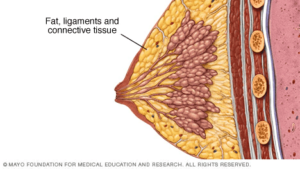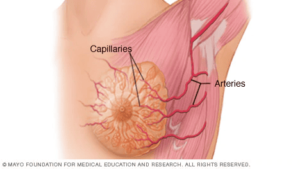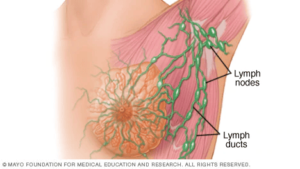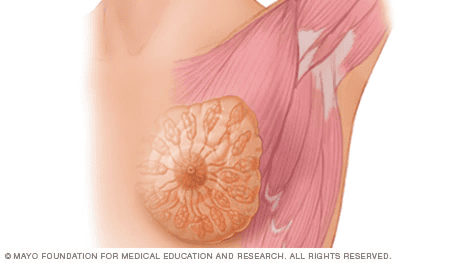The breast is a very important part of a woman, serving both aesthetic purposes and the role of producing milk to nourish a baby when a woman has children. Let’s explore the anatomy of women’s breasts through the images below.
1. General Overview of Women’s Breast Anatomy
A woman’s breast is a complex structure composed of fatty tissue, glands, and connective tissue, as well as lobes, lobules, ducts, lymph nodes, blood vessels, and ligaments.
2. Lobules and Ductal System

Each breast of a woman contains several lobules (15-20 lobules), all connected to the nipple. Each lobule consists of many small hollow alveoli. The lobules are linked together by a system of ducts.
If a woman is breastfeeding, the ducts are responsible for transporting breast milk from the alveoli to the milk sinuses located in the areola – the darker-skinned area at the center of the breast. From the areola, the ducts merge to form larger ducts that ultimately lead to the nipple.
3. Adipose tissue, ligaments, and connective tissue

The space surrounding the lobules and ductal system is filled with adipose tissue (fat), ligaments, and connective tissue. The size of the breast is largely determined by the amount of adipose tissue present, while the structural system for milk secretion is nearly equivalent in all women.
The breast tissue of women is sensitive to hormonal changes during the menstrual cycle. Most breast tissue will gradually change over time, with a tendency for more adipose tissue.
4. Muscles

5. Vascular system

The arteries supplying the breast tissue branch off from the internal mammary artery and the lateral thoracic artery. Approximately 60% of breast tissue is supplied with blood by the perforating branches of the internal mammary artery, about 30% is supplied by the lateral thoracic artery, and a small portion is supplied by adjacent branches.
Oxygen and nutrients are transported to nourish the breast tissue through the blood flow in the arteries and capillaries, which are very small and fragile blood vessels.
6. The lymphatic system and lymph ducts

The lymphatic system includes lymph nodes and lymph ducts, and is a part of the human immune system. The lymph nodes (located in various positions, such as the armpit, above the collarbone, behind the sternum, etc.) play a role in retaining harmful agents and eliminating them from the body.
Breast cancer is currently a concern for most women, as it ranks first among cancers found in females.

